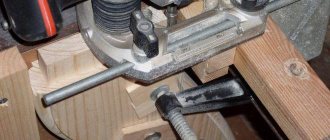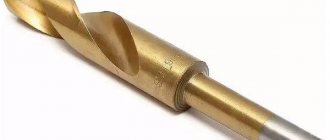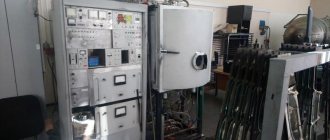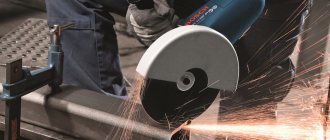Regardless of the types and materials of pipes, shut-off and control valves are a mandatory part of pipelines. It includes the following product groups:
- pass-through and end valves;
- valves;
- safety, control and check valves.
In turn, each type of fittings is divided into many varieties according to the types of locking mechanisms, methods of connection to pipes, body materials and other characteristics.
Currently, pipelines made of steel and polymer, for example HDPE, pipes are in operation, so the question of how to connect a HDPE pipe to a metal tap is quite relevant. There are different ways to solve it. First of all, this is a wide range of pipeline fittings, fittings and fittings, as well as technologies for reliable connection of dissimilar materials.
When is such a connection needed?
The need for connections of this type arises in the following cases:
- connecting to an existing metal (most often cast iron) riser of a polymer liner from a sink, sink, bathtub, etc.;
- installation of steel reinforcement on the HDPE pipeline;
- connection to a system with a high operating temperature, which low-density polyethylene (HDPE) cannot withstand;
- connection to the metal outlet of a garden irrigation system from the house;
- a tie-in into the central highway, the wiring to which passes through an area with increased load. In this place, stronger metal segments are used, and polymer pipes go up to it.
Video description
This video shows the installation of a flange adapter (FFRK) - with pressure rings, which allows you to do without welding and threading:
Clip pad
Another fairly simple way to connect two pipes of the same diameter without welding or threading is an outer ring.
The pipes are brought together, a rubber sealing gasket is applied to them, which in turn is clamped with a collapsible clamp - tightened with four or six bolts.
You can also make tees and branches using this method. To do this, one of the parts of the clip must have the appropriate fastening, as in the figure below.
Threadless pipe connection + tee Source lennevaproekt.ru
Advantages and disadvantages of such a connection
Preference is given to such a connection due to the unique characteristics and high performance properties of HDPE products. They got their name thanks to the technology of manufacturing polyethylene under low pressure.
Compared to products made from LDPE (high-density polyethylene), HDPE has a higher density and better strength characteristics.
- Like all types of plastic, it is not subject to corrosion and the destructive effects of chemically aggressive substances, and has a smooth surface that allows it to maintain high throughput throughout the entire period of operation.
- It has frost resistance (withstands -50˚) and low thermal conductivity.
- Polyethylene products are lightweight and easy to assemble. They are cheaper than polypropylene pipes and metal-plastic analogues.
- They are used in the water supply system, when laying external water supply to the house, and installing a sewer network.
The disadvantages of HDPE products include intolerance to high temperatures (begins to soften at 80˚). Because of this, it is not recommended for use in heating and hot water supply systems, where it is better to use metal-plastic.
Polyethylene is very susceptible to UV rays, therefore it is recommended only for laying underground, in dark rooms.
This video demonstrates the characteristics of low pressure pipes:
How to connect a plastic pipe to a metal pipe without threads
The connections discussed above were based on the fact that a fitting having a thread for connecting to a metal part having a mating threaded part was soldered or attached in some way to the plastic pipe. This technology is generally accepted and ensures high quality, tightness, and strength of the connection; its only and main drawback is the impossibility of joining with pipes that have a smooth surface. It should be noted that it is impossible to directly connect a plastic pipe to an iron pipe without threads when laying any type of utility lines; technology has been developed to connect them using electric-welded couplings and NSPS transition elements.
Connection methods
The transition is carried out in two ways:
- detachable (through special adapters in the form of threaded couplings, bends, tees);
- one-piece (using either butt welding or through electric fittings that, when current is applied, can melt the welded surfaces, after cooling which a reliable joint is obtained).
Detachable
Classic threaded connection. Turns are cut into the metal with a die, and a transition fitting is screwed onto them, which has an external or internal thread at one end, and a seat for a plastic element at the other. Today's advanced compression fittings require virtually no tools or equipment for assembly.
Docking using flanges. Used when connecting pipeline fittings made of steel that have a flange or the possibility of welding it. For such connections, a polymer bushing with a separately attached flange was invented. It is put on the sleeve, it is welded to the end of the HDPE pipe. Next, its flange is bolted to a similar part of the connecting element.
The photo shows the bushing:
Flange for sleeve:
One-piece
Based on the welding method of joining components. A distinction is made between butt welding, which is used when connecting pipes and fittings of the same diameter and thickness, and welding through polyethylene-steel electrical adapters using special equipment.
Video description
This video shows how to make a fitting connection
Gebo fastener
One of the popular ways to connect pipes without welding and threading is Gebo fasteners. It is well suited for joining both homogeneous and pipes made of different materials, for example, for joining cast iron and steel pipes with plastic, or with each other.
Essentially, this is a clamp fitting that comes in single- and double-sided (more common). One of the varieties of Gebo is made in the form of a tee, with which you can make both connections and adapters. The fastener consists of a body, a clamping ring, seals on the sides, as well as a cone nut, which compresses all parts together.
Such a system is quite simple to install, even if you have no plumbing experience:
- It is necessary to sand the future joints.
- Next, you need to put on the nut and rings in a certain sequence: clamping, pressing and sealing.
- Then the Gebo mount itself is put on and clamped with a nut.
Application of Gebo fasteners Source yandex.net
Diameter standards
The main dimensional parameter of a HDPE pipe is the outer diameter. In accordance with GOST, it is indicated in the labeling of domestic products. The size range is set in a certain sequence, the most used starts from 16 mm and goes up to 110 mm.
When installing yourself, it is important to understand how to combine sections of pipe products made of steel and HDPE. There is a specially designed table of their sizes suitable for each other:
Briefly about the main thing
Plastic pipes are made from three types of raw materials: polyethylene, polypropylene, polyvinyl chloride. Metal ones are made mainly from steel and copper, cast iron is less often used. Polypropylene and steel are most often used to install a heating system or water supply.
There are a number of ways to connect pipes made of different materials: using fittings, Gebo fasteners, flanges, clip lining, crab fasteners or clamps. Welding is only suitable for joining homogeneous materials, but if a metal tip is put on a plastic pipe, then this method can also be used.
All of the methods listed are not homemade and the components for their use are freely available. The main thing is to understand the system itself and purchase the necessary fasteners of the appropriate size.
Ratings 0
Step-by-step technique for connecting pipes with your own hands
The technology for converting HDPE to metal includes the following stages:
- choosing a connection method;
- determination of section sizes and material lengths;
- purchase of pipes, fittings;
- tool preparation;
- connection installation;
- verification tests.
- necessary tools and materials
The minimum set of tools includes:
- wrenches, adjustable wrenches;
- mites;
- pipe cutter;
- thread cutter;
- welding machine if necessary.
Materials are purchased depending on the volume of work, pipes - taking into account 10% of losses to waste.
Work progress
- Threaded detachable connections begin with the preparation of the steel end: it is cut, aligned, and threaded.
- Then, using a winder, the adapter fitting is screwed on by hand.
- At the other end of the fitting, plastic is installed using a crimp nut.
- Use a wrench to tighten the fitting onto the thread.
Installation features
Polyethylene fittings are used mainly for joining pipes of small sections.
It is important to note that there are adapters with both internal and external threads. Therefore, they are selected depending on the purpose and, naturally, in accordance with the size of the pipes.
A popular fitting for connections of this type has become the so-called “American” coupling, with a steel end and a thread cut on it on one side, and a plastic outlet on the other.
Just a sawn-off polyethylene pipe hardly fits into the sealing ring. You can cut the outer parts of the pipe into a cone with a knife. The product will go in all the way without any problems.
Video description
This video shows how to fasten with a Gebo fitting
Pipe welding
Welding is used exclusively for threadless connections of metal pipes. For plastic and metal, this method is only considered if a metal plug or adapter of sufficient length has been previously placed on the end of the plastic pipe to prevent excessive heating of the plastic. Moreover, it is not recommended to use gas welding, as it heats the metal even more.
The standard welding procedure is as follows:
- Bevels are made at the intended location of the seam;
- The joints are cleaned with sandpaper (start with coarse-grained paper and finish with fine-grained sandpaper).
- Welding is performed with a vertical seam. In this case, it is necessary to monitor the arc and the absence of “smudges” from the electrode.
- When the seam hardens, check its strength (by tapping it, for example, with a hammer).
- Next, the seam is cleaned with sandpaper - first coarse-grained and then fine-grained.
The advantages of welding are the simplicity of the process itself, the tightness of the connection, and the ability to use it for any pipe diameter without worrying that the coupling will be small.
On a note! the weld can fail under heavy loads or vibrations because it contains residual stress. Also, classical welding cannot be used to connect iron with copper and aluminum.
Welding seam on metal pipes Source svarkaprosto.ru
Using flanges
Flanges allow you to make a high-quality connection of a profile pipe without welding or threading, which makes them very popular. In addition, all flanges are manufactured in accordance with GOST, which means that finding the right part is quite simple.
Flanges are tension plates that are welded or screwed onto pre-cut threads on pipes. Also included with the flanges are bolts and nuts of suitable diameter, which are used to tighten the plates. The last element of the package is an o-ring, which follows the shape of the flanges and is placed between them during installation.
Example of a flange connection Source trubanet.ru
Frequent connection problems and errors
Errors when selecting pipes: a product for cold water was used for the heating system or HDPE products were used for pressure water supply. You should pay attention to product labeling. Colored longitudinal stripes indicate areas of product use: blue - for drinking water, yellow - for gas pipelines, no stripe - for technical water supply.
- Use of HDPE pipes for purposes other than their intended purpose
- Use of low-quality fittings.
- Laying pipelines in areas with heavy loads - under roads, etc.
- Improper use of compression fittings. Often the pipe is inserted into the fitting, resting its end against the rubber ring. It is not right. You need to chamfer the end, as if to give it the appearance of a cone, which will allow you to insert the end of the pipe into this ring and push it in deep until it stops. After tightening the nut, the ring will seal, creating a strong connection.
Expert advice
When installing a metal tap on a HDPE pipe, an effective solution may be to use an electric welded saddle. This is especially suitable for installation under pressure. The saddle is welded to the polyethylene using built-in spirals, and then a hole is drilled in the channel to install the tap.
Threading a steel end is essentially the most difficult stage in installation. To make this labor-intensive process more efficient, it is recommended to alternate moving the thread cutter half a turn forward and moving it back a little. This will save energy and speed up work.
A combination of several pipe joining methods
Special compression adapters combine flange connection and the properties of a compression fitting. At one end they have a regular flange, which is mounted with bolts to the mating flange of the metal pipe, at the other - a compression transition using a crimp nut.
This method is used in networks with small pipes (up to Ø 110 mm).
The photo shows a HDPE compression adapter with a flange:
There are permanent threaded joints in which the thread is used only to fix the segment, and then an additional channel is welded on.











